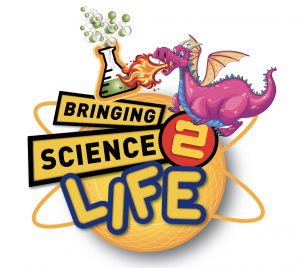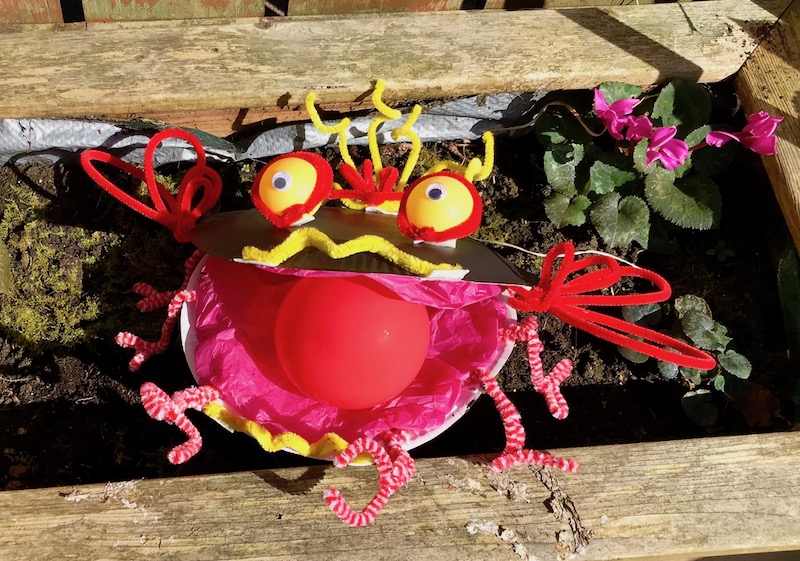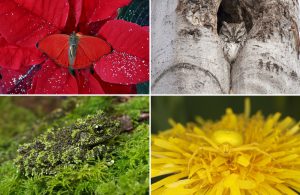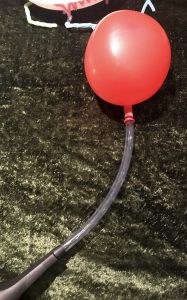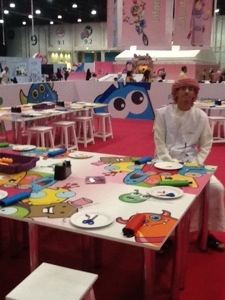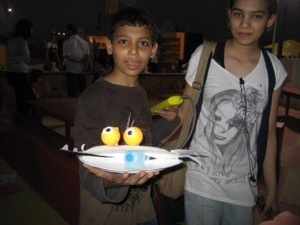Pneumatic Monsters
Pneumatic Monsters
This activity can also be used to investigate camouflage as an adaptation and why it helps organisms to survive.
Once the children have made their monster or insect (or whatever!) ask them to try to hide them around the house or in the garden or park; this reinforces the usefulness of being able to ‘hide’ in an environment in a fun way.
Can you spot the creatures?
‘Ready or not, here I come!’
All good hide and seek players knows that the key to winning is to blend in with your surroundings, so the seeker cannot find you. For some animals, hiding is more than just a game – it’s a means for their survival.
Camouflage is when animals blend in with their surroundings so they are not seen by other living things. There are many different ways an animal can camouflage itself.
Nuts and Bolts
A balloon is used to open the monsters mouth
- 2 paper plates, however an egg box or burger box are also great for making these pneumatically controlled monsters
- Tubing wide enough to go over the device used to push air into the balloon e.g. balloon pump, syringe or washing up bottle.
- Make some eyes or just glue on 2 ping pong balls for eyes.
- Draw eyeballs with black pen.
- Cut some tin foil into small squares and roll each piece into a cone shape
to make teeth. What else could it have in its mouth? - Glue the teeth on to your monster.
- Paint or colour your monster; does it wear a hat? Have ears? .
- Put the balloon over the tube, secure it with masking tape if necessary.
- Make a hole in the middle of the hinged section of an egg box big enough for the tubing to
pass through or tape the end of the tube with the balloon attached to a paper plate and then staple another plate on top of it. - Attached the other end of the tube to the washing-up bottle, syringe or balloon pump.
Don’t want the hassle of gathering together the tubes, balloons, plates and art material – then why not buy our Pneumatic Monsters kit. Up to 4 crazy creatures can be made!
https://www.science2life.com/product/pneumatic-monsters-basic-kit/
Objectives
Your children should learn:
- how air pressure can be used to produce and control movement
- techniques for making simple pneumatic systems
- how to compare the effectiveness of different systems
- how to use appropriate vocabulary to describe how things work
Activity Ideas
Show them familiar objects that use air to make them work e.g. recorder, whistle, bicycle pump, balloon, inflatable swimming aids, foot pump for inflating an air bed, coiled party blowers, toys which use air. What does the air do?
How has it been used in the design of these products?
Construct a simple pneumatic system by joining a balloon to 5mm tubing and then to a washing-up liquid bottle or a balloon pump. Encourage the children to investigate:
- What happens to the air when you squeeze the bottle? Or push in the pump?
- What happens when you let go? Or stop pumping?
- What happens if you put fabric over the balloon and then inflate the balloon?
- Can you lift a book with the balloon?
Show them how balloon pumps or syringes can be used in conjunction with simple levers to control movement e.g.
-place balloon in between 2 paper plates joined by staples to give a hinged section so that when inflated the plates separate – the basic set up for our monsters!
-place the balloon in a small box with a lid so that when inflated it raises the lid… a more advanced monster
Now provide your children with the components for making their own pneumatic systems:
In Elev8 I used paper plates (egg boxes are good too), extra wide straw (any tubing which fits over the balloon pump will do), ping pong balls for eyes, double sided tape tabs, cellotape, stapler, balloon pump, balloon.. we didn’t have time to decorate which is a shame as this part of the activity is the most fun. Their monsters can be scary or friendly; big or small; colourful or camouflaged; alive or imaginary!”
Outcomes
- construct effective pneumatic systems
- know of techniques for fixing components
- investigate ways of using their pneumatic systems with other materials to control movement.
You will quickly find out that the best part of this activity is actually just blowing up the balloon so that it bursts! So my advice is have lots of spare balloons, hide the pets and take part in an activity that will keep you calm
I would love to see the monsters you and your children create so please tweet them to ScientificSue or post them on my facebook page (www.facebook.com/scientificsue) so that all can see and enjoy how we use art to bring Science2Life.
Workshop set up in for Abu Dhabi’s Science Festival
A sea creature made at Qatar’s Marine Festival
